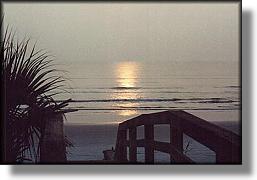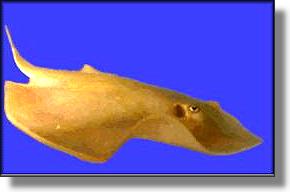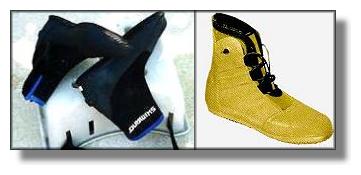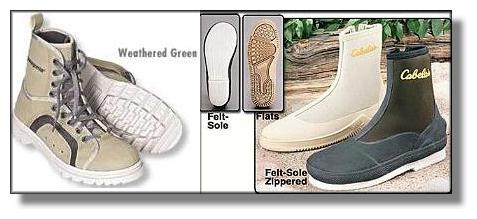
"Lifeguards rescue 25 from currents. Date line, Daytona Beach: Saturday
proved to be another beautiful day for beach goers, but lifeguards were kept busy as
they helped rescue 25 people caught in rip currents." [5:30 am – New Smyrna Beach – FL]
Rip currents are caused by water running in cuts, or troughs, between sandbars that
run parallel to shore. Water from waves funnels back out through the cuts forming
narrow, fast-moving currents. These can pull an unwary swimmer or wader into
deep water. Why all the alarm? This can be dangerous even for a wary wader
because water can fill waders, making it impossible to move.
Fly Fishing the surf is fun and exciting. It is best done in flat water or surf with fewer
sequences of rolling waves. Flat surf is the best, especially just before sunrise.
If you see surfers out then it probably isn't going to be good for fishing the surf.
Trust me. Don't wade into the water deeper than your thighs, you can get caught
up in the excitement and venture to deep.
Wind is a major factor when fly-fishing the surf. When casting over the waves pay
attention to the currents, the tide and especially the wind. The wind can blow your
fly line in a direction that may cause it to come back to you. There is wind created
by the wave action too. The line can wrap around your feet or tangle around your
body. When the line is too close to you it becomes very difficult to pull the line
out of the water. You want the line to come back parallel to the beach but away
from where you are standing. If the wind is blowing your fly into you while casting,
turn the palm of your casting hand outward to move the fly line to the opposite side
of your body.
Fly patterns in the surf will vary by location, time of year and types of baitfish. I like
chartreuse Clousers or white deceivers or large green and white herring patterns.
Surface flies also work but they must be large (2/0 to 5/0). The Crunch Man's
Needlefish or Denny's Glass Eel work really well in the surf in my region.

When wading the lagoon and estuaries wear your flats boots. Oysters are extremely
sharp and will penetrate almost any material. Be alert for skate and stingrays that lay
partially buried in the sandy bottom, they have a barb near the back of their tail.
Skates and rays alike, will usually get out of your way, unless of course you step
right on one.
Flats boots are a must for wading, and they come in different styles. One of the
best is made by Chota (shown in yellow).

Other manufacturers include Shimano (next to my stripping basket), Orvis, Cabelas
(Premium Flats Boot), Patagonia (Marl Walker) and so on. Look for boots
that offer bottom and side protection.

|


 They have tiny stinging cells that can last for days.
This swimmer had a bad case and was treated in the hospital.
Jellyfish stings, ray barbs, oysters and a host of other nasty
creatures can ruin a really nice day on the water, another critter
is man.
They have tiny stinging cells that can last for days.
This swimmer had a bad case and was treated in the hospital.
Jellyfish stings, ray barbs, oysters and a host of other nasty
creatures can ruin a really nice day on the water, another critter
is man.




